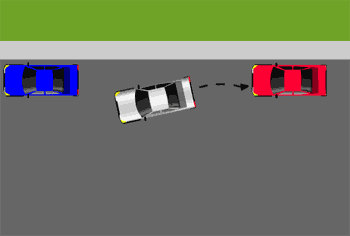Parallel Parking
Welcome To Our Quick & Easy Driving Information Guide
How to Master Parallel Parking in 7 Simple Steps
If parallel parkingResources Terms Parallel_parking Driversed.com feels like a dragon that's just too big to slay, you're not alone. Many drivers struggle with this skill, which combines spatial visualization, reverse steering, and strong nerves — often in heavy traffic. Whether you're a student preparing for your first road test or a seasoned driver relocating to an urban area, knowing how to parallel park will make your life a whole lot easier. The good news is that, with practice, you can master on-street parkingDriving Information Driving Techniques Parking Driversed.com. Here's how.
Parallel Parking Dimensions
On some streets, parallel parking spaces are marked with painted lines. If you have an area like this near you, it's a great place to practice, since these spots are usually quite spacious. You'll get plenty of room to maneuver without worrying about bumping into the cars around you."Official" parallel parking dimensions vary from state to state, and sometimes even city to city. Most parallel parking spaces will have a standard length of 22 feet to 26 feetPages Article.aspx?post=46 PennDOTWay and a width of 8 feet.
Spaces designated for compact cars will have smaller dimensions, such as 20 feet long and 7 feet wide. To get a feel for how big that is, it helps for you to measure your car and then measure out a standard space. You can do this in your driveway to help visualize. Once you get this general size in your mind, it will be easier to pick out a good parallel parking space "in the wild" — that is, on streets where spaces aren't marked with painted lines.
Step-by-Step Guide to Parallel Parking
While there's no substitute for hands-on practice, understanding the mechanics of parallel parking is key. We break down the process into steps so you know just what to do when you hit the road to practice your parallel parking skills.
Step 1: Choose your space. Make sure it's one that's big enough for your car, with room to spare in front and behind. Keep in mind your mental image of 26 feet to help you decide.
Step 2: Pull up to the space. Position your car so that it's beside the car in front of the empty parking space. Your front bumpers should line up. There should be about two feet between your vehicle and the parked car.

Step 3: Signal your intentions. Put on your right turn signal to let other drivers and cyclists know you're going to parallel park. This will warn people not to come too close behind you.
Step 4: Check your mirrors. Make sure no one — pedestrian, cyclist, or vehicle — is coming up behind you. If they do, you may have to wait until they pass you to continue, if they haven't left you enough room to back up. You may also need to adjust your passenger side mirror downward to see the curb.

Step 5: Back into the space. Shift the car into reverse. Before you take your foot off the brake, turn the wheel most or all the way to the right so the vehicle goes into the spot at a 45-degree angle. Look over your right shoulder to see what’s behind you and ease backward. Keep going until the back driver’s side corner of the car is lined up with the driver’s side front bumper of the vehicle behind the parking spot. If your back wheels hit the curb, you’ve gone too far.

Step 6: Straighten it out. Straighten the wheels by turning the steering wheel to the left. Slowly back up as you straighten the wheels, which will help you pivot the vehicle into the space (instead of hitting the curb). If needed, pull forward to straighten the vehicle in the parking spot. You may need to back up a little again if you’re too far forward in the spot.

Step 7: Put it in park. Once your car is centered in the space and is 6 to 12 inches from the curb, put the vehicle in park. If you're parked on a hillDriving Information Driving Techniques Parking On A Hill Driversed.com, make sure to angle your wheels toward the curb before you engage the parking brake.
Note that these instructions assume that you will be parking on the right side of the road. If you're driving on a one-way street, it may be possible to parallel park on the left side, in which case you'll need to mentally revise the steps to face left instead of right.
Get More Help With Parallel Parking
Though several states have eliminated the parallel parking requirementNews Parallel Parking Off Driving Test Nevada Losangeles on road tests, learning this skill ensures that you are ready to drive — and park! — anywhere you want to go. For more help preparing for your driver's test, check out the convenient online courses at Teen Drivers Ed Driversed.comDriversEd.comDriversed.com.
© 1997-2025 DriversEd.com. All rights reserved. Please see our privacy policy for more details.






